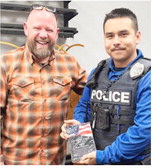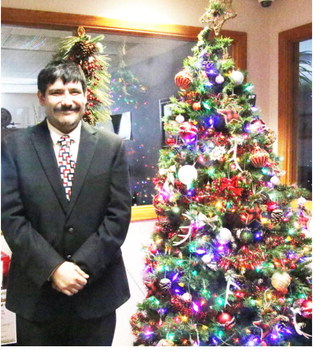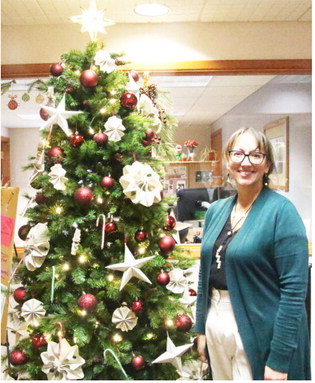Native Americans Make Up High Percentage Of State Prisoners
A new report by the Prison Policy Initiative and Western Native Voice examines where inmates in Montana’s state prison system come from, and looks at incarceration rates at the local level – data that has not been routinely collected and compiled.
The report shows that some neighborhoods and areas of Montana’s largest cities contribute disproportionately to the state’s incarceration rates, while some smaller towns and communities have a higher per capita incarceration rate than larger places.
The study, “Where people in prison come from: The geography of mass incarceration in Montana” was released in October, and includes data sets that break down the inmates of Montana’s prison system geographically. The report allows policymakers to use the data to help understand the communities they serve as well as talk about solutions.
Currently, the report states that Montana has an imprisonment rate of 123 per 100,000 residents. And the study also found that prisoners come from all over the state. While the larger cities tend to be represented more heavily, when adjusted for population, it’s not just the larger cities which stand out.
For example, three cities – Billings, Great Falls and Missoula – have imprisonment rates higher than the state average. But, among towns that have at least 1,000 residents, East Helena, Deer Lodge, Butte and Helena have the highest imprisonment rates in the state.
The study drilled down even more deeply, looking at areas within the larger Montana cities to show that imprisonment rates for certain neighborhoods was much higher than others in the same place.
Billings
Billings has an imprisonment rate of 213 per 100,000 people, but the study found that two of the 12 neighborhoods in the city were responsible for 38 percent of the prisoners.
“The South Side neighborhood is home to 3 percent of the city’s residents, but 20 percent of the imprisoned population. Similarly, the East Central neighborhood is home to 13 percent of the city’s residents but 18 percent of the city’s imprisoned population,” the report said.
Those translate to incarceration rates more than 15 times higher than average. For Billings’ South Side, it’s nearly 100 times greater than the state average.
“(The rates are) no surprise, given what we know about how race and poverty impact a person’s likelihood of having interactions with the criminal legal system,” the report said. “In addition, we know that these two neighborhoods are some of the poorest areas in the city and that poor people, families and communities are disproportionately impacted by the criminal legal system: 14 percent of the South Side neighborhood and 24 percent of the North Side neighborhood live in poverty, compared to less than 10 percent of all Billings residents living in poverty.”
The City of Billings did not respond to comment for this story.
Missoula
The report also identified three neighborhoods in Missoula that had higher incarceration rates than average. The Northside neighborhood had an imprisonment rate of 393 per 100,000, while the Westside had 666 and the “Franklin to the Fort” area had 191.
Missoula Chief of Police Jaeson White told the Daily Montanan that responding to calls is a matter of where the calls for service are coming from. Moreover, he said that often keeping the entire city safe is a matter of responding to single, discrete incidents in one part of the town or another. Some areas, as in all cities, he said need more policing.
“We’re not looking at the individuals, but we look at where crime occurs in a town. It’s not driven by demographics, it’s driven by data,” White said.
He said in many of those same neighborhoods which have higher incarceration rates, it’s the community members in those places who are asking for more of a police presence.
“Some of these statistics are being driven by the community which has asked us to do more there,” White said.
And, he said that crime prevention units focus on areas where there is more criminal activity, so that an increase in arrests can be the result of more public safety resources being deployed.
He also said what the report may not capture is the recent trend of more robust community policing. For example, a more comprehensive approach may include help from the city’s zoning department which can help improve places where blighted properties may be a nuisance or attract crime. The department also has mobile support teams where social workers instead of police respond.
“It’s not just an enforcement piece,” White said. “We’re trying to address it holistically.”
He said that many Montana communities are also dealing with the rise of aggressive violent crime rising. For example, in 2019 the City of Missoula had 221 aggravated assaults. In 2021, that number had doubled.
“We’re not in a bubble. This is a nationwide trend,” he said.
The study suggested that it’s not just a matter of how many people each city or neighborhood sends to the prison via its criminal justice system. Instead, there’s a greater community impact: “Decades of research show that imprisonment leads to cascading collateral consequences, both for individ- uals and their loved ones. When large numbers of people disappear from a community, their absences are felt in countless ways. They leave behind loved ones, including children, who experience trauma, emotional distress, and financial strain. Simultaneously, the large numbers of people who return to these communities (since the vast majority of incarcerated people do return home) face a host of reentry challenges and collateral consequences of incarceration, including difficulty finding employment and a lack of housing.”
“It’s an unfortunate reality that part of the entire criminal justice system has more representation from certain groups, not because we’re targeting but because we focus on criminal activity,” White said.
However, those statistics don’t account for the mobile crisis units in places like Missoula and Billings – where people in distress see a social worker, not someone with a badge, White said.
“It’s a great model because the team can help and we can be pulled away to another policing need,” he said. Native Americans In Prison
The report also demonstrated that Native American residents are not only incarcerated at higher rates, but those neighborhoods contribute more to the state’s inmate population.
Billings’ Native population is less than 5 percent, but the South Side neighborhood is 15 percent and the North Side is 11 percent.
“Research has shown that policing tends to be concentrated in communities composed predominantly of people of color which results in people living in these communities experiencing disproportionate arrest and incarceration rates,” the study said.
Those trends mirror a statewide trend of disproportionate representation by American Indians.
“American Indian people are disproportionately incarcerated in Montana prisons: In 202, Native people were 23 percent of the state prison population, but less than 7 percent of the statewide population,” the report said.
In Billings, for example, Native Americans make up 27 percent of the arrests, but Natives represent less than 5 percent of the city’s population. A similar, but less dramatic statistic exists in Missoula where Natives make up less than 2 percent of the population, but constitute 14 percent of arrests.
Overall, the study suggests that cities like Billings and Missoula focus more resources on other social programs, not just expect the police to continue to arrest people, only to be sent to prison.
“Our finding suggest that those resources would be better put toward reducing poverty and improving local health, education, and employment opportunities,” the study concluded.


